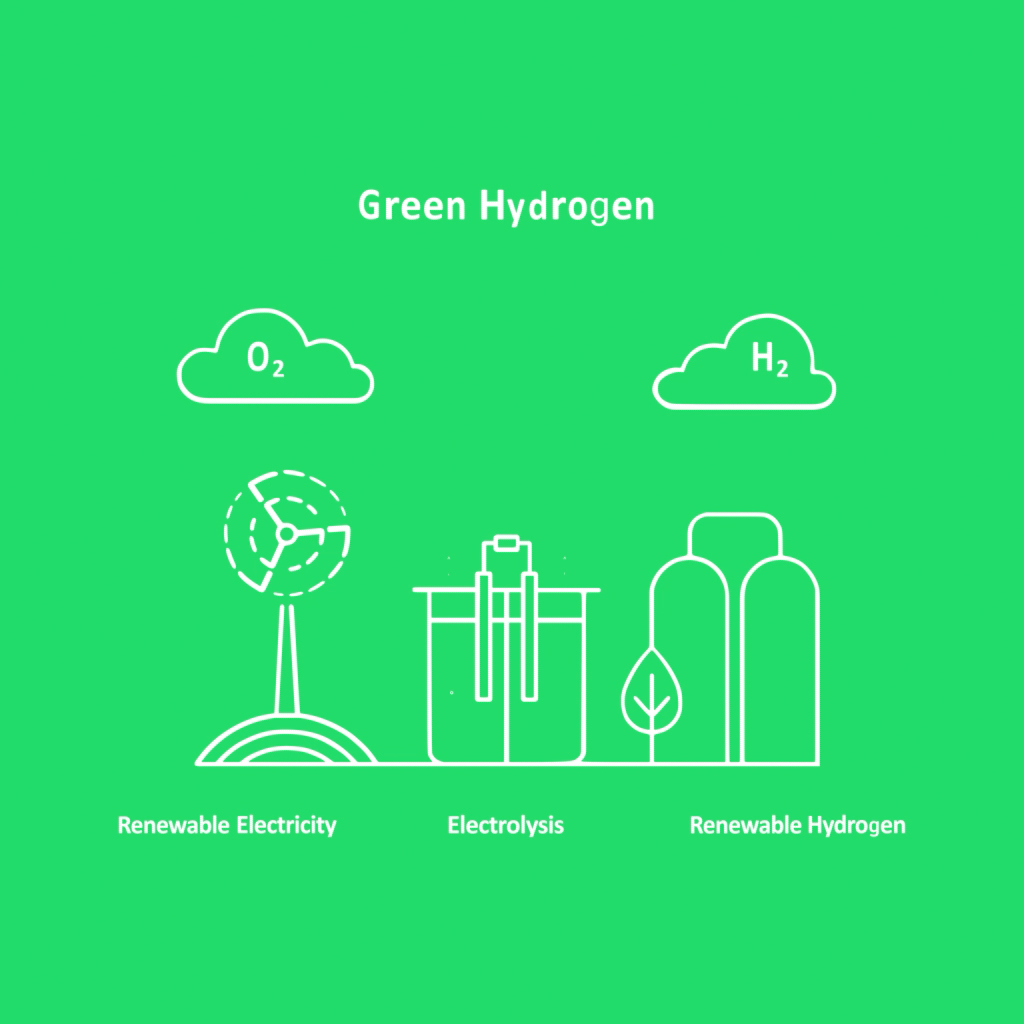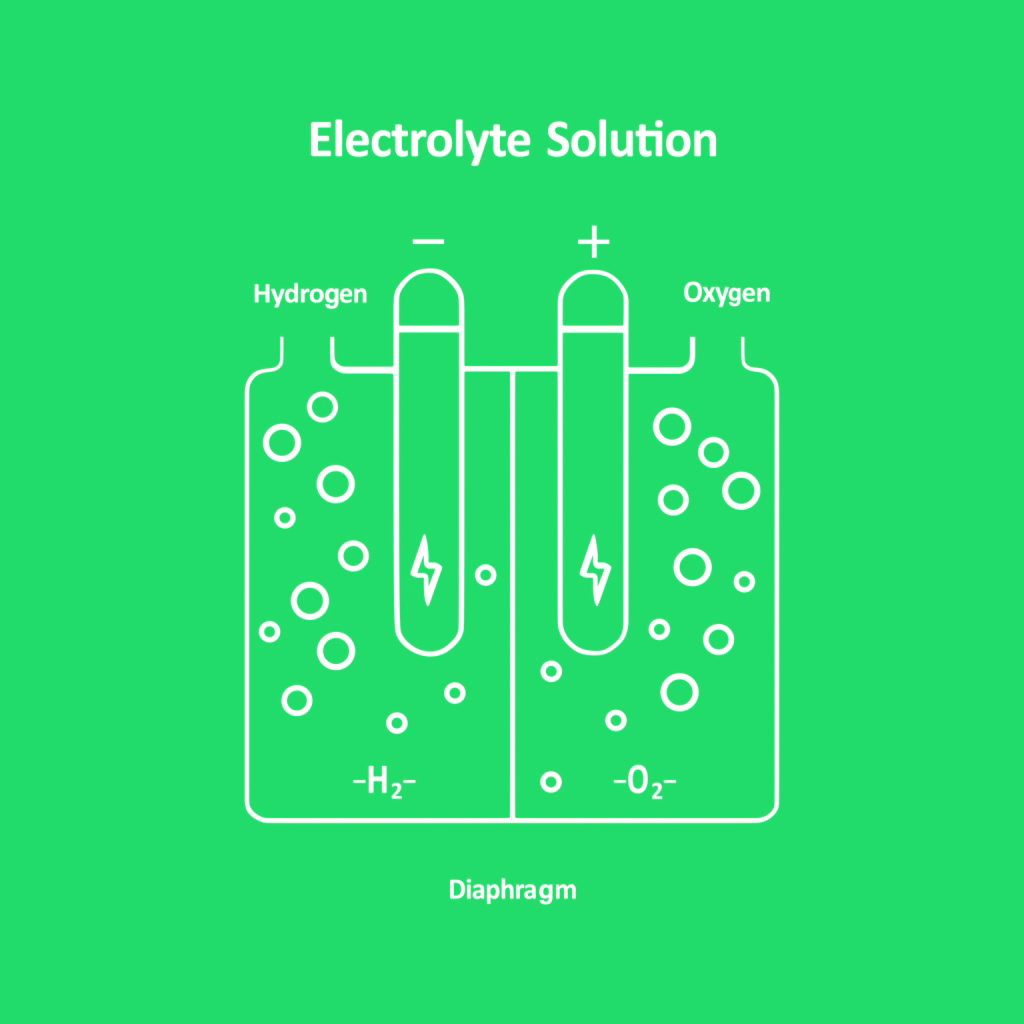Hydrogen can be produced using renewable energy and water requiring no fossil fuels in the production process

Why Hydrogen
Hydrogen production
Hygen Energy are developing low-carbon hydrogen production facilities.
There are different ways hydrogen is produced and it is labeled accordingly.
- Green hydrogen is produced by splitting water through electrolysis and powering this system with renewable energy sources such as solar and wind.
- Blue hydrogen is produced by cracking natural gas and using carbon capture to collect the CO2 produced and store it permanently underground.
- Grey hydrogen is produced by cracking natural gas and allowing CO2 to vent into the atmosphere.

How Electrolysis Works
An electrolyser uses electricity to break water into hydrogen and oxygen in a process called electrolysis
- An electrolyser contains an anode (positive charge) and a cathode (negative charge) and a membrane in between
- As electricity is passed across the anode and cathode the water is split into molecules of hydrogen (H2) and oxygen (O2). Hydrogen is built up around the negative cathode and oxygen at the positive anode
- The hydrogen at the cathode is captured and the oxygen is vented to the atmosphere.
- The hydrogen is stored as a compressed gas, liquefied or converted into ammonia depending on the requirement of the end user.


When hydrogen is used in fuel cells to generate power the hydrogen recombines with oxygen to produce water. There is no carbon dioxide or nitrous oxide produced which leads to much cleaner air for us to breath.
Hydrogen can be an energy storage source for renewable energy allowing renewables to deliver electricity to the grid network or stored in the form of hydrogen for use later maximising the use of renewable power.
Hydrogen can be produced locally using local renewables, giving a secure energy supply in the local area without relying on external energy suppliers.
Hydrogen can be stored in a tank on vehicles for use in a fuel cell or hydrogen combustion engine. This allows much longer range than electrical vehicles are able to achieve with current battery technologies. This makes hydrogen fuel cells well suited to use in buses and HGVs where battery solutions are unable to achieve the mileage that the routes demand.
Hydrogen from electrolysis is made by splitting water using renewable energy. When the hydrogen is used the waste product is water giving a clean energy cycle.
